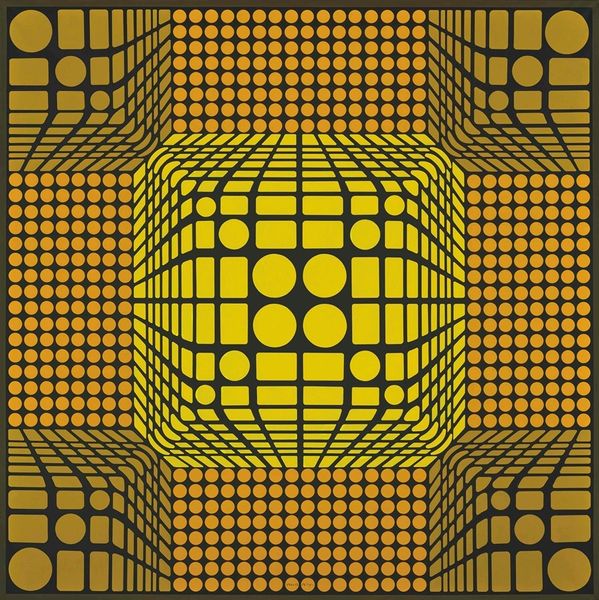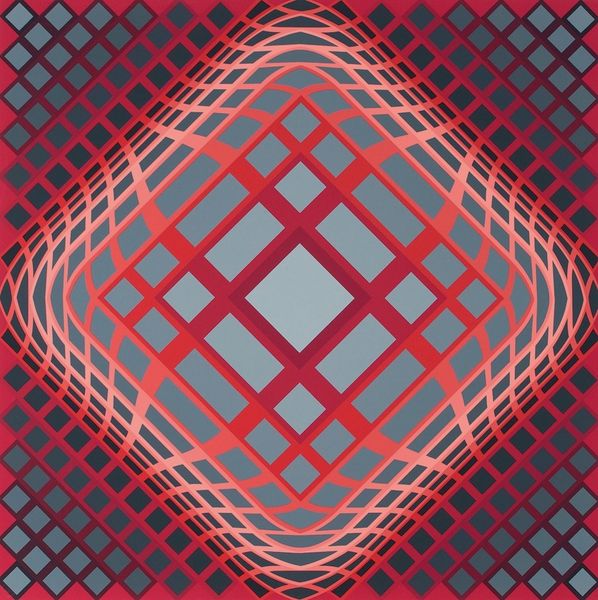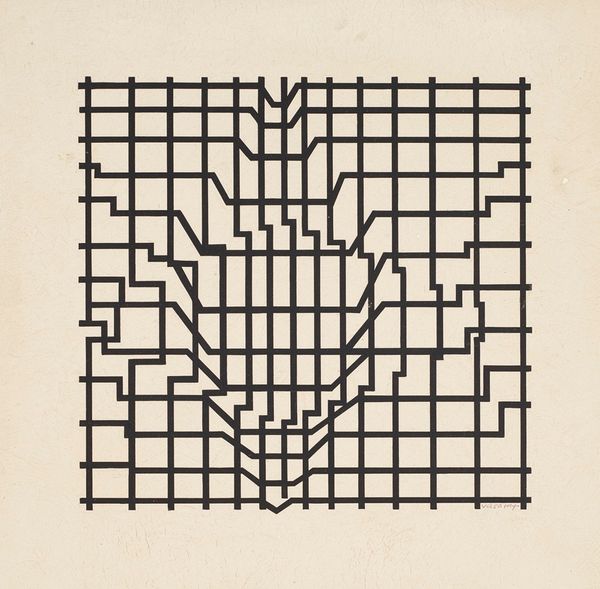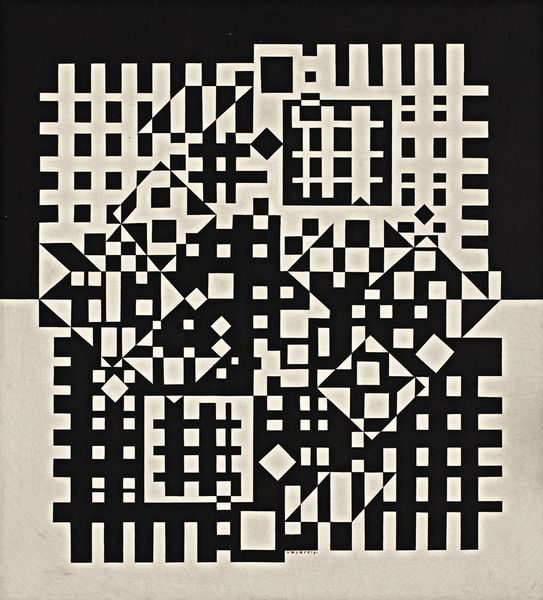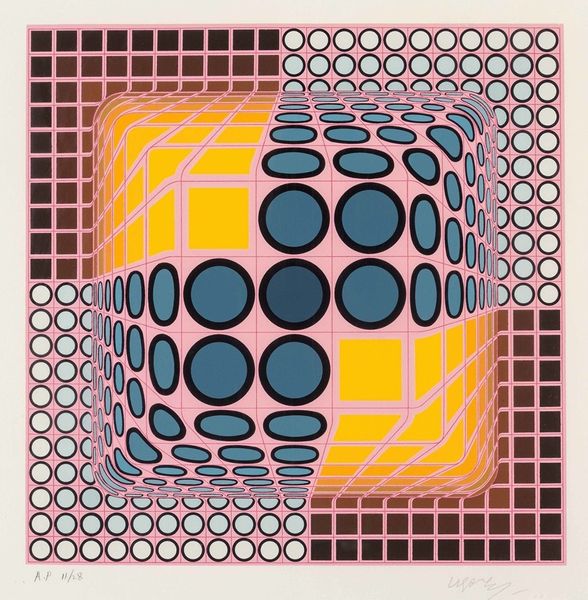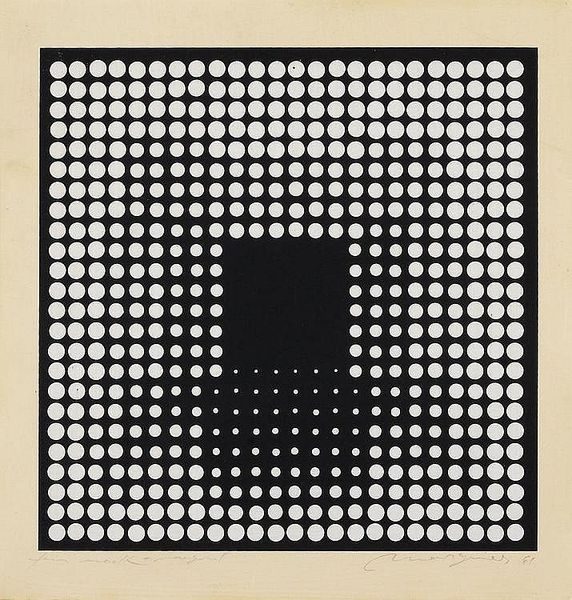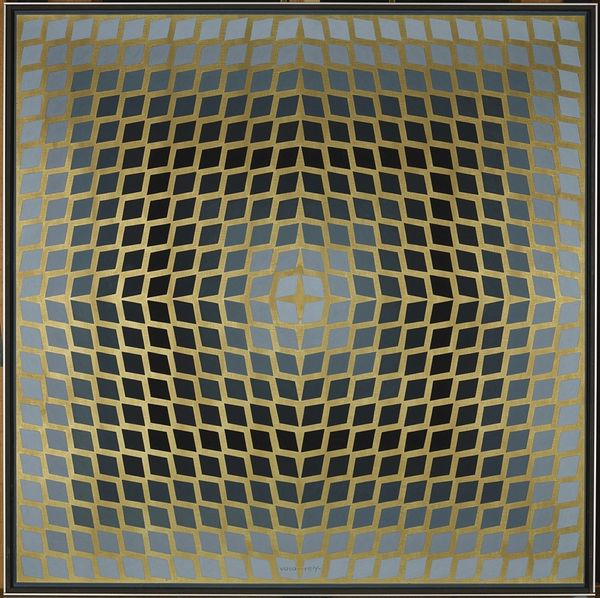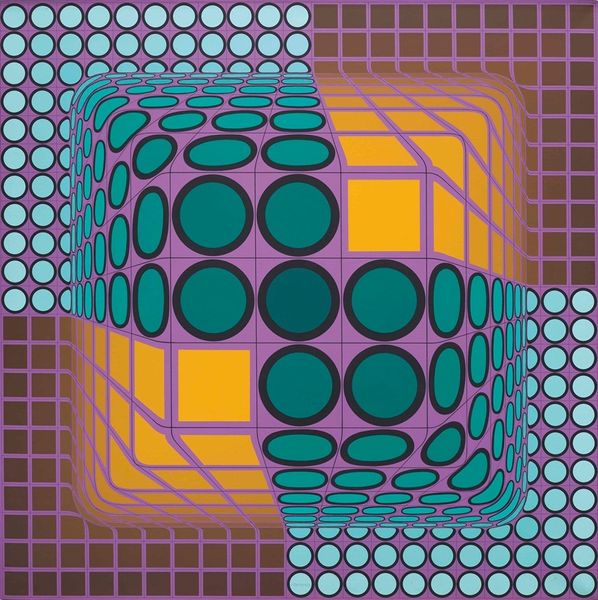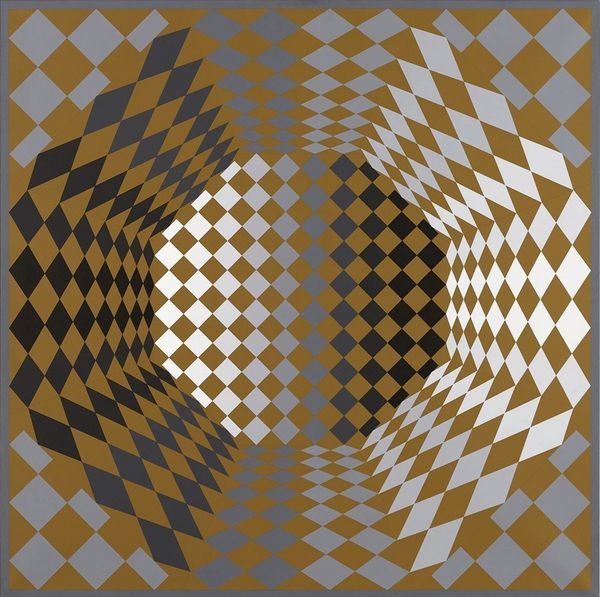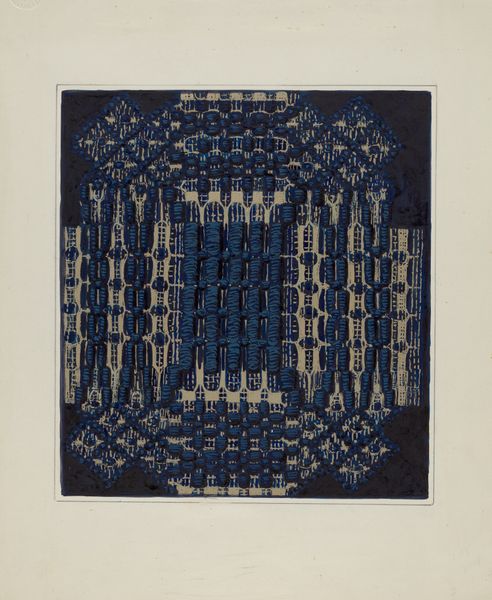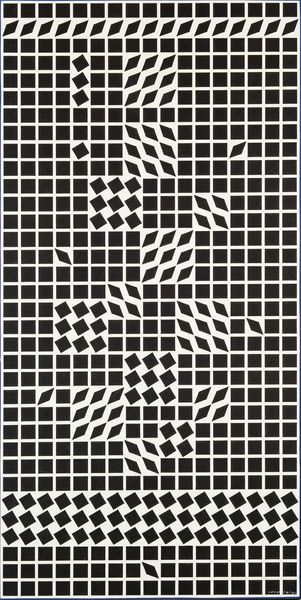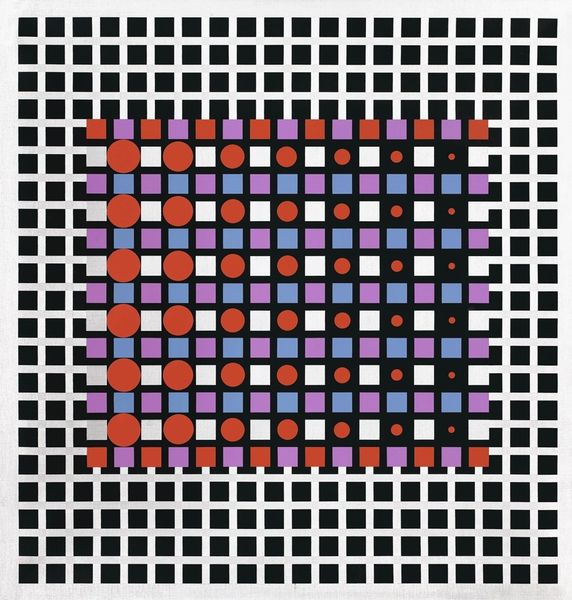
#
op-art
# print
#
abstract
#
geometric pattern
#
abstract pattern
#
geometric
#
geometric-abstraction
#
modernism
Copyright: Modern Artists: Artvee
Curator: Ah, "Meride," a print made in 1963 by Victor Vasarely. Instantly recognizable, isn’t it? One of his iconic explorations of Op Art. Editor: My first impression? It's like a meticulously planned maze…or maybe a strange kind of textile pattern seen through a kaleidoscope. There’s a mesmerizing tension. It’s both rigid and feels almost…in motion. Curator: That tension, that sense of movement is crucial. Vasarely's work in the 60s aimed to disrupt static perception, very much reflecting a shifting society. The squares seem to breathe, creating an illusion of depth and dimension, all from a flat surface. Editor: You know, I find the contrast so stark and powerful – that solid black background really makes the intricate white geometric pattern pop. Did Vasarely see his works as accessible to a broad public? Because there’s an immediacy to it, it avoids the often rarified airs of "high art." Curator: Absolutely, he was driven by that concept. Vasarely strived to democratize art. Believing it should be integrated into everyday life. This print medium perfectly embodies that. Prints are multiples; accessible in a way paintings often aren’t. He even envisioned large-scale murals for public spaces derived from these ideas. Editor: Interesting. When you put it in the context of wanting art to be for everyone it brings out how this piece might symbolize order versus chaos. The rigid framework overlaid with this explosive dynamism. Is this perhaps a commentary on society at that time? Curator: You’ve nailed it. The underlying grid offers that structure, yet the superimposed shapes, defying regularity, mirror the revolutionary spirit. And look at the subtle imperfections. The grid isn’t perfect, the lines have varying weights, introducing an organic quality against the machine-like precision. This piece feels so forward-looking but simultaneously reminds us of a handcrafted tradition. Editor: Yes. Now I also see this conversation between control and release, between something man-made and something slightly off-kilter. What a trip. So this relatively simple pattern can hold so many competing themes. Curator: Exactly. This is Vasarely's genius – capturing cultural energies and channeling them into mesmerizing visual experiences.
Comments
No comments
Be the first to comment and join the conversation on the ultimate creative platform.
